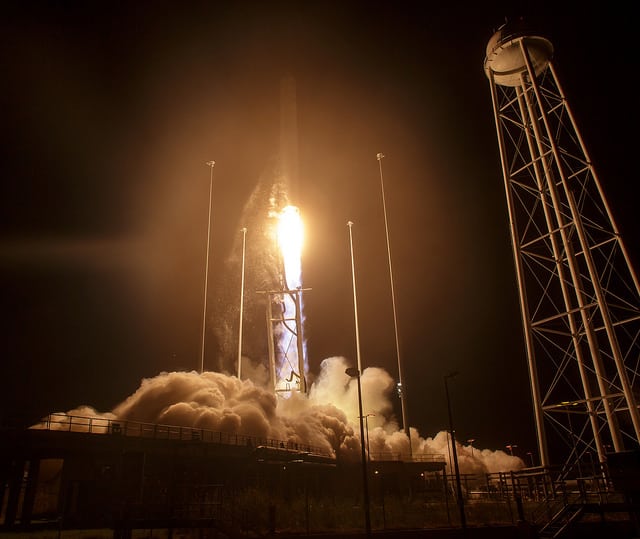Latest News
[Via Satellite 10-18-2016] Orbital ATK’s Antares rocket lifted off Oct. 17 from NASA’s Wallops Flight Facility in Wallops Island, Virginia, returning to flight after a nearly two-year hiatus. The upgraded Antares 230 rocket now uses RD-181 engines from Russian manufacturer NPO Energomash in lieu of the AJ-26s implicated in the Oct. 28, 2014 Antares launch failure.
Yuzhnoye and Yuzhmash, both of Ukraine, designed the rocket core and manufactured it respectively. Orbital ATK produced the Castor 30XL solid rocket motor second stage. The launch also marks the third flight of an enhanced Cygnus spacecraft featuring a greater payload capacity, supported with new fuel tanks and UltraFlex solar arrays.
Antares successfully delivered Cygnus carrying 5,300 pounds (2,400 kilograms) of cargo into orbit. The spacecraft is scheduled to reach the International Space Station (ISS) on Oct. 23. Cygnus will remain attached to the space station for approximately one month before departing with roughly 3,700 pounds (1,700 kilograms) of disposable cargo for a safe, destructive reentry into Earth’s atmosphere over the Pacific Ocean.
Yesterday’s launch, designated OA-5, is Orbital ATK’s sixth cargo delivery mission to the ISS for NASA. Along with delivering vital equipment, supplies and experiments to astronauts aboard the space station, a NanoRacks deployer will release Spire cubesats used for weather forecasting after Cygnus departs from the space station.
Under the CRS-1 contract with NASA, Orbital ATK is tasked with delivering approximately 66,000 pounds (30,000 kilograms) of cargo to the space station through 2018. Starting in 2019, the company plans to begin performing a minimum of six initial cargo missions under NASA’s recently awarded CRS-2 contract.
Get the latest Via Satellite news!
Subscribe Now